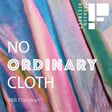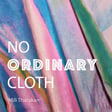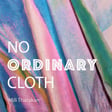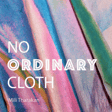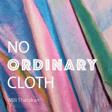
Ep 17. Scaling an E-textiles Startup and Soft Electronics for the Auto Industry with Madison Maxey
Join us on this episode of No Ordinary Cloth as we welcome Madison Maxey, the visionary founder and CEO of Loomia, a pioneering company in e-textiles. Host Mili Tharakan sits down with Maddy to explore her incredible journey from fashion design at Parsons to creating cutting-edge, soft and flexible electronics that are now making way into the automotive and robotics industries.
In this episode, Maddy shares her story of resilience, innovation, and the highs and lows of building a business in a challenging industry. Loomia’s breakthrough LEL (Loomia Electronic Layer) technology is helping redefine how we think about integrating electronics with textiles for better electro-mechanical properties but the road hasn’t been easy. With limited funding and market interest in e-textiles, Maddy has successfully built a revenue-generating e-textile startup.
For many listeners working in emerging textile technologies, this conversation will resonate deeply. As you work to find that elusive product-market fit, early adopters, and the right market, Maddy’s insights offer a beacon of hope and practical strategies for navigating this complex journey.
We dive into the real challenges of turning prototypes into products, and Maddy highlights the role of perseverance and customer obsession in creating a successful business. She also shares career advice for aspiring e-textilers and her vision for the future of this rapidly evolving field. Discover the fascinating intersections of textile, electronics and engineering — and gain invaluable insights on what it takes to make an impact in e-textiles.
Tune in for an inspiring conversation packed with insights, strategies, mindsets for textile entrepreneurs.
Loomia: Website I Samples I Linkedin
Mili Tharakan: Linkedin I Instagram I Buy me a coffee
Contact me: No Ordinary Cloth
Recommended listening:
Ep 9. Disobebient Fabrics: A Journey in Smart Textiles with Linda Worbin
Ep 3. Knitting Mathematics and Musical Textiles with Sophie Skach
Ep 1. Light and Lace with Sara Robertson
Cover art: Photo by Siora, Photography on Unsplash
Music: Inspired Ambient, Orchestraman
